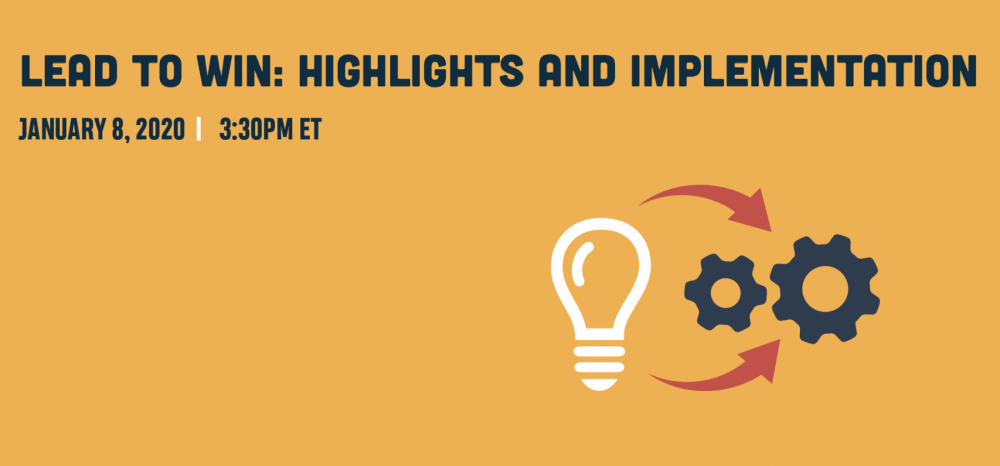Frontline Fundamentals: Lead to Win Highlights and Implementation

This article wraps up our “Lead to Win” leadership series. In this series, and during the associated webinars, we have discussed characteristics of effective leaders – both who they are and what they do, challenges leaders commonly face, and how to improve your leadership skills and maximize your effectiveness as a leader. The remainder of this article will outline highlights and key points from each article in the series and reinforce that leadership is a skill that can be practiced and improved. As you read, think about how each topic builds on the others and how interrelated and interdependent they are.
Developing a Complete Definition of Leadership
- Leadership = Influence (team wants to) and Performance (combination of behavior and results).
- Your leadership is measured by the performance of your team more so than anything you do as an individual.
- C5 leadership – which consists of competence, commitment, compassion, courage and credibility – is a strategic way to gain influence and increase leadership effectiveness.
Stop Telling and Start Communicating
- Communication must result in mutual understanding.
- The communication process involves messages, senders, media, obstacles, filters, receivers and feedback.
- Feedback is the critical component to ensure mutual understanding has occurred.
Valuing Your Team and Developing Relationships
- You do not have a choice as to whether you have relationships with your team; you absolutely have a choice about the kinds of relationships you have.
- You must believe that success is possible for yourself, your team and each individual on the team.
- How you treat people matters.
Coaching and Feedback that Maximize Performance
- Providing coaching and feedback demonstrates and grows C5 leadership skills.
- Give SMART – specific, measurable, achievable, relevant and timely – positive and negative feedback based on behavior you have observed yourself, while also asking questions.
- Value your own feedback and feedback from other people, as well as system responses and results.
Leadership Styles and the Art of Flexecution
- People are equal but no two are the same.
- The only time your leadership should be about you is if you are looking for someone to blame.
- You should use a combination of leadership styles based on the people involved, the work being performed and the environment you are in.
Summary
No one can give us an exact roadmap that shows us how to handle given situations as a leader. What we can do is arm ourselves with proven principles and strategies that work for effective leaders. We also should understand that leadership is a skill that can be learned, practiced and improved. I highly encourage you to email me any leadership-related questions or concerns you have and join us for our free leadership webinar on January 8.
Remember that you have been given positional authority. That is yours to lose and it has a ceiling. Personal influence, on the other hand, is yours to gain and has no ceiling. This series was titled “Lead to Win” for a reason; the name implies that your leadership is outcome oriented and targeted at success. Define your overall outcomes – the team’s mission, vision, values and goals – and lead to win so those outcomes are accomplished. Within that framework and without sacrificing any of those outcomes, “Lead to Win” includes continuous improvement and development of the team as a whole and individually.
Success is not just possible – it is probable when you understand what winning looks like, how to win and how to lead to win.
About the Author: David McPeak, CUSP, CET, CHST, CSP, CSSM, is the director of professional development for Utility Business Media’s Incident Prevention Institute (https://ip-institute.com). His experience includes operations management, safety and training roles. McPeak holds multiple safety and training certifications and has received numerous awards. He also has served as chairman of Task Team One of the OSHA ET&D Partnership, as a member of Incident Prevention’s editorial advisory board and as a member of the North Carolina Apprenticeship Council. Reach him at david@utilitybusinessmedia.com.
About Frontline: The Frontline program provides interactive, engaging classroom training that empowers employees to become better utility safety leaders. Subject matter experts facilitate the learning process and cover three areas – safety leadership, incident prevention and human performance – critical to safety success. Visit https://frontlineutilityleader.com for more information.
*****
Webinar on Highlights and Implementation
January 8, 2020, at 3:30 p.m. Eastern
Visit https://frontlineutilityleader.com for more information.